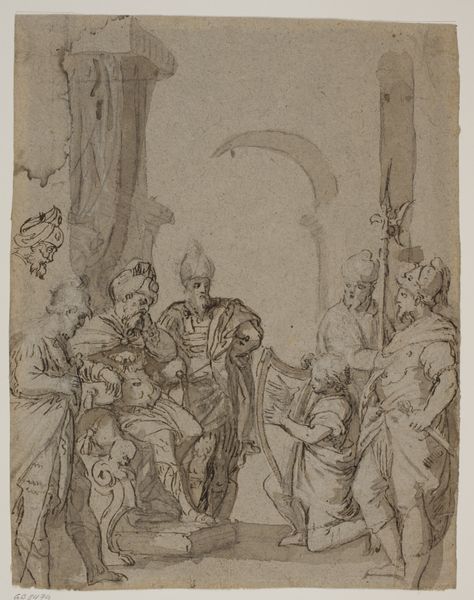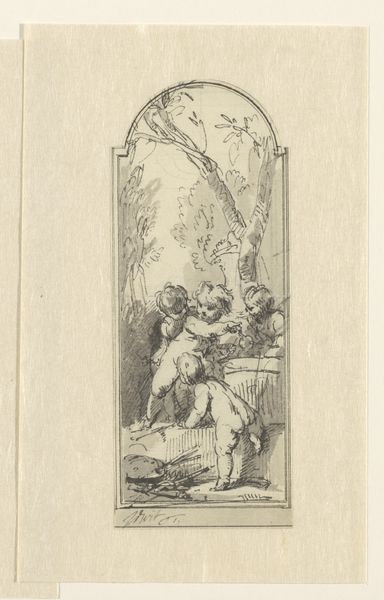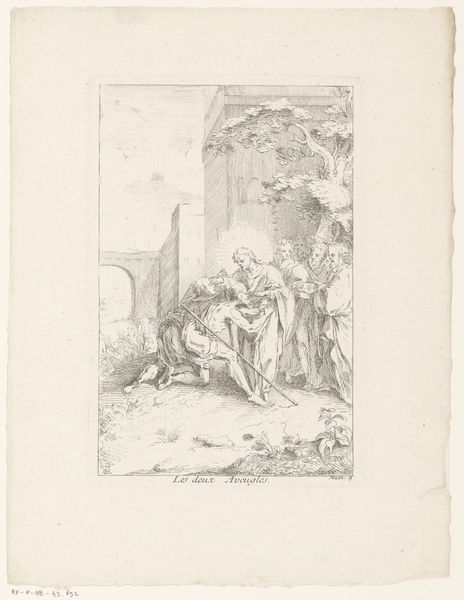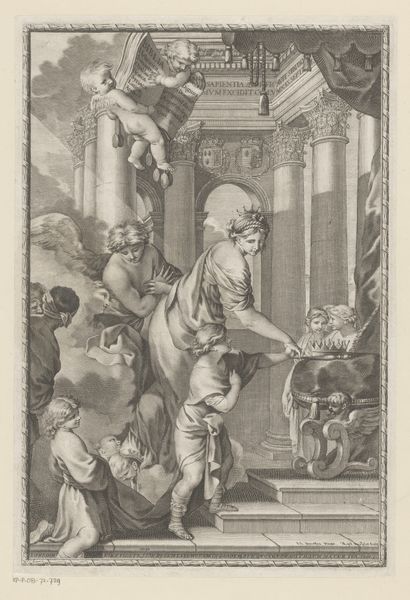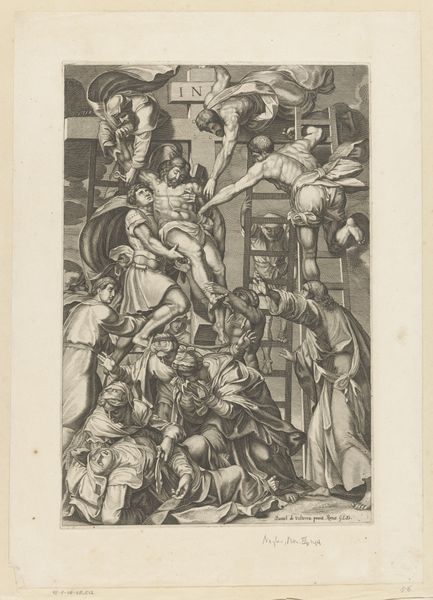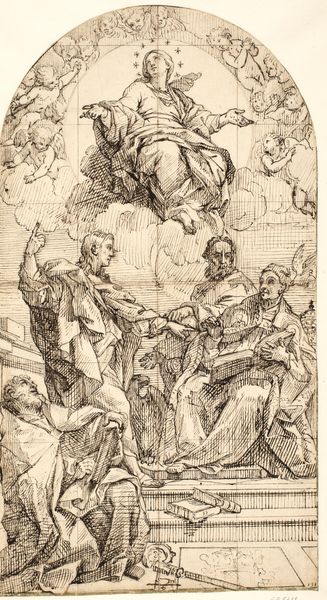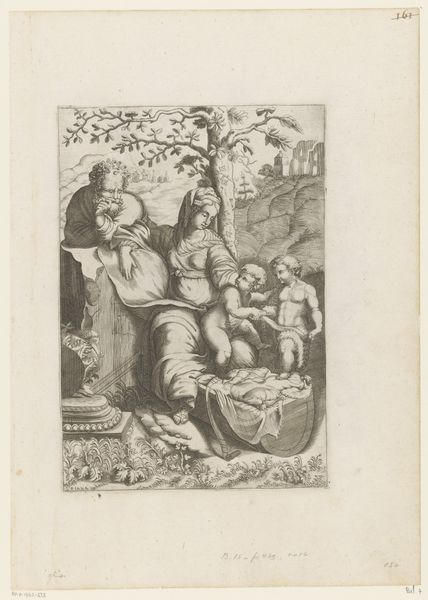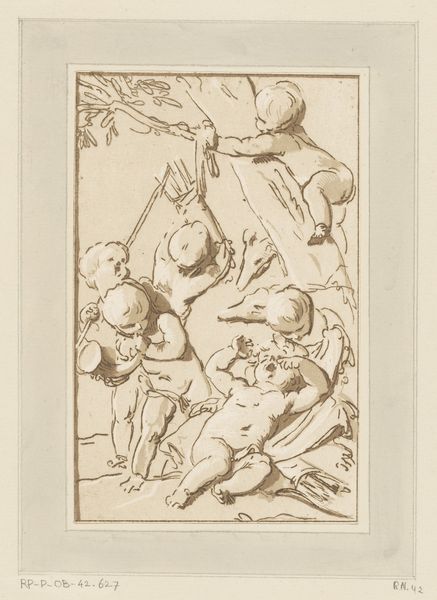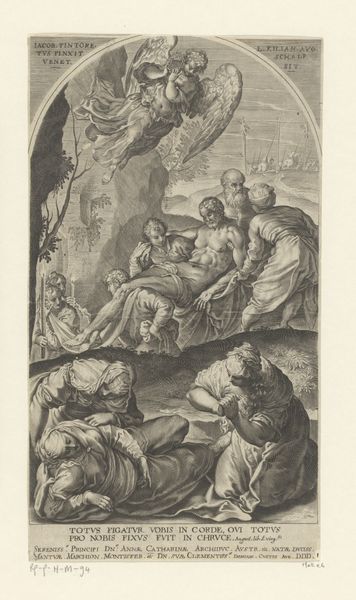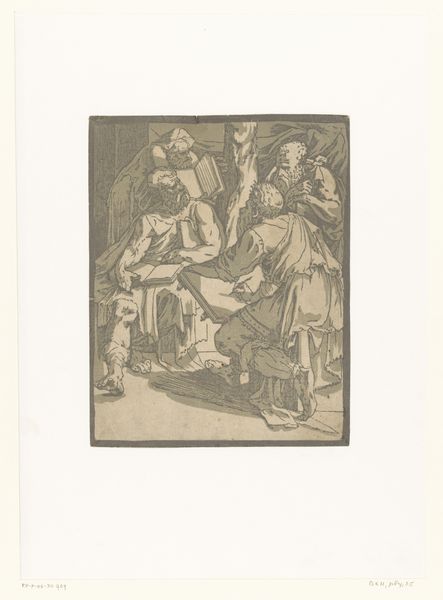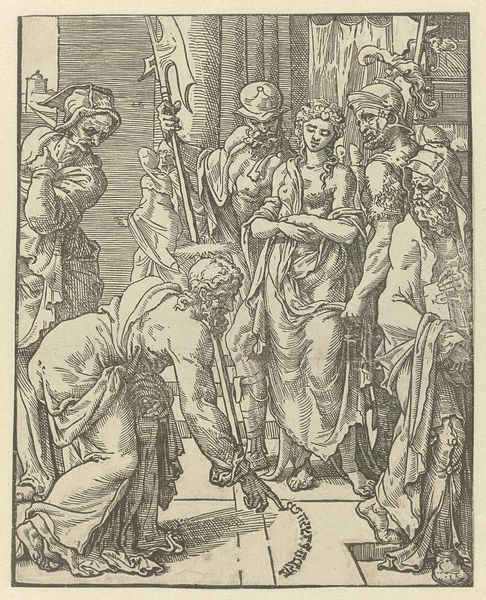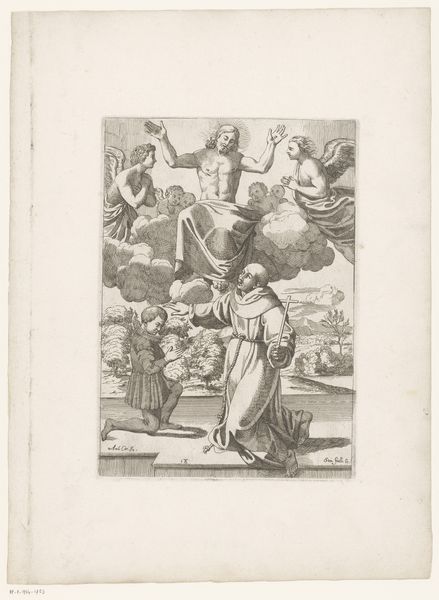
drawing, ink
#
drawing
#
baroque
#
figuration
#
ink
#
genre-painting
#
history-painting
#
academic-art
#
italian-renaissance
Dimensions: 236 mm (height) x 160 mm (width) (bladmaal)
Curator: Welcome. We’re looking at "Scene from Roman History," an ink drawing that's been tentatively dated to somewhere in the 17th century. It’s currently held in the collection of the SMK, Statens Museum for Kunst. Editor: Immediately, the overall composition strikes me as exceptionally well-balanced. The strong verticals of the spears juxtapose the flowing drapery and dynamic gestures. It’s restrained, yet potent. Curator: It appears to belong to either the Italian Renaissance or Academic Art movements, possibly even Baroque style if you examine the emotional expressions and dramatic lighting, despite being executed merely with ink and wash. Consider the artist's use of chiaroscuro to highlight the central figures. Editor: Precisely. I wonder what particular historical moment is represented. There's an intriguing dynamic between the figures, particularly the leader, possibly a Roman emperor. His ornate armour, complete with classical details, places him within a certain sociopolitical power structure. Note how this armour is placed at the painting's edge, suggesting that this ruler has a darker aspect that has been banished to the edges of society. Curator: One could delve into the symbolic elements at play. For instance, the trophies at the feet of what seems to be an emperor suggest conquests and victories that would definitely contribute to a richer understanding of power and legacy during that period. Also, this may also tell us how history was taught at this time period and may highlight an even bigger narrative regarding who teaches history and what history do they teach? Editor: Absolutely. The artist also masterfully captures the psychological weight of command. Look closely at the determined, serious gaze of the leader, contrasting with the seemingly subservient figures to his right, whose forms melt softly into the background with the help of the monochrome style. Curator: This drawing undoubtedly gives insight into the culture's ideals of leadership and historical memory, as perceived in early modern Europe. It shows both power and vulnerability as well. It can be suggested, then, that at times it can be hard to reconcile them, that only through reflection are we able to come into communion with both concepts and better understand the society being reflected here. Editor: Indeed, it is precisely by the use of those artistic elements, such as chiaroscuro, form, composition, etcetera, that one's insight can also be further enhanced. Curator: Yes, and such considerations extend the interpretation to understand how narratives can change.
Comments
No comments
Be the first to comment and join the conversation on the ultimate creative platform.

